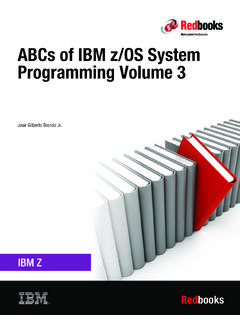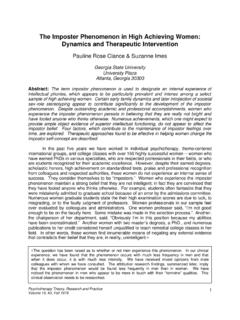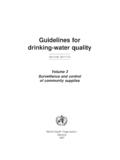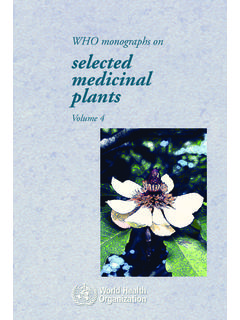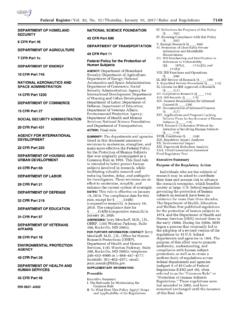Transcription of This PDF is a selection from an out-of-print volume …
1 this PDF is a selection from an out-of-print volume from the NationalBureau of Economic ResearchVolume Title: Economics of the Family: marriage , Children, and HumanCapitalVolume Author/Editor: Theodore W. Schultz, Publisher: University of Chicago PressVolume ISBN: 0-226-74085-4 volume URL: Date: 1974 Chapter Title: A Theory of MarriageChapter Author: Gary S. BeckerChapter URL: pages in book: (p. 299 - 351)A Theory of MarriageGary S. BeckerUniversityof Chicago and National Bureau of Economic ResearchI1. IntroductionIn recent years, economists have used economic theory more boldly toexplain behavior outside the monetary market sector, and increasingnumbers of noneconomists have been following their examples.
2 As aresult, racial discrimination, fertility, politics, crime, education, statisticaldecision making, adversary situations, labor-force participation, the usesof "leisure" time, and other behavior are much better , economic theory may well be on its way to providing a unifiedframework for all behavior involving scarce resources, nonmarket as wellas market, nonmonetary as well as monetary, small group as well , one type of behavior has been almost completely ignored byeconomists,t although scarce resources are used and it has been followedin some form by practically all adults in every recorded society.
3 I refertO marriage . Marital patterns have major implications for, among otherthings, the number of births and population growth, labor-force participa-tion of women, inequality in income, ability, and other characteristicsamong families, genetical natural selection of different characteristicsI benefited from the discussion of several earlier drafts of this paper at the Workshopin Applications in Economics of the University of Chicago and in seminars at theNational Bureau of Economic Research, Northwestern University.
4 And the PopulationCouncil. Very helpful suggestions were received from William Brock, Isaac Ehrlich,Alan Freiden, H. Gregg Lewis, Robert T. Michael, Marc Nerlove, Richard Posner,George J. Stigler, T. W. Schultz, and two referees. Michael Keeley provided valuableresearch assistance. Research was supported by a grant from the Ford Foundation tothe National Bureau of Economic Research for the study of the economics of paper is not an official NBER publication since it has not been reviewed by theNBER Board of Directors.
5 'To the best of my knowledge, the only exception prior to my own work is an un-published paper by Gronau (1970a). His paper helped stimulate my interest in S. BECKERIATHEORY OF marriage over time, and the allocation of leisure and other household , the neglect of marriage by economists is either a major over-sight or persuasive evidence of the limited scope of economic this essay, it is argued that marriage is no exception and can besuccessfullyanalyzed withinthe framework provided by moderneconomics. If correct, this is compelling additional evidence on the unify-ing power of economic simple principles form the heart of the analysis.
6 The first is that,since marriage is practically always voluntary, either by the personsmarrying or their parents, the theory of preferences can be readilyapplied, and persons marrying (or their parents) can be assumed toexpect to raise their utility level above what it would be were they toremain single. The second is that, since many men and women competeas they seek mates, a market in marriages can be presumed to exist. Eachperson tries to find the best mate, subject to the restrictions imposed bymarket two principles easily explain why most adults are married andwhy sorting of mates by wealth, education, and other characteristics issimilar under apparently quite different conditions.
7 Yet marital patternsdiffer among societies and change over time in a variety of ways thatchallenge any single theory. In some societies divorce is relatively com-mon, in others, virtually impossible, and in Western countries it hasgrown rapidly during the last half-century. Some societies adjust to legaldifficulties in receiving divorces by delaying marriage , whereas othersadjust by developing more flexible "consensual," "common-law," or"trial" marriages. In many the bride brings a dowry, in others the groompays a bride-price, and in still others couples marry for "love" and disdainany financial bargaining.
8 In some the newly married usually set up theirown household, in others they live with one set of not pretend to have developed the analysis sufficientlytoexplain all the similarities and differences in marital patterns acrosscultures or over time. But the "economic" approach does quite well,certainly far better than any available It is hoped that thepresent essay will stimulate others to carry the analysis into these 2 of Part I considers the determinants of the gain from marriagecompared to remaining single for one man and one woman.
9 The gain isshown to be related to the "compatibility" or "complementarity" of theirtime, goods, and other inputs used in household 3 of Part I considers how a group of men and women sort them-selves by market and nonmarket characteristics. Positive assortive mating a positive correlation between the values of the traits of husbands and wives is generally optimal, one main exception being the sorting by the earn-2 Someof the best work has been done by Goode (1963), but there is no systematictheory in any of his fine power of men and womeEmpirically, positiveto IQ, education, height, atother 4 of Part I considerdivided between the husbandat 50 50, or determineddemand for different kinds oPart II develops varioussimple analysis in this optimal sorting and thedetermining the incidenceconsidered.
10 The assumptioare known with certaintymates, delays in marriage ,Divorce and the durationments made during marriaother ways. Also briefly exppatterns for fertility, genetfamily incomes and home2. The Gain from MarriageThis section considers twoto marry each other orsimply means that they shaoccurs if, and only if, boththeir recent develoI assume that utility deppurchased in the marketeach Theyservices and partly with tMost important for preseor transferable amonghamong members of the saHousehold-produced COof meals, the quality acompanionship, love, anMore precisely, if they expwithcertainty.










